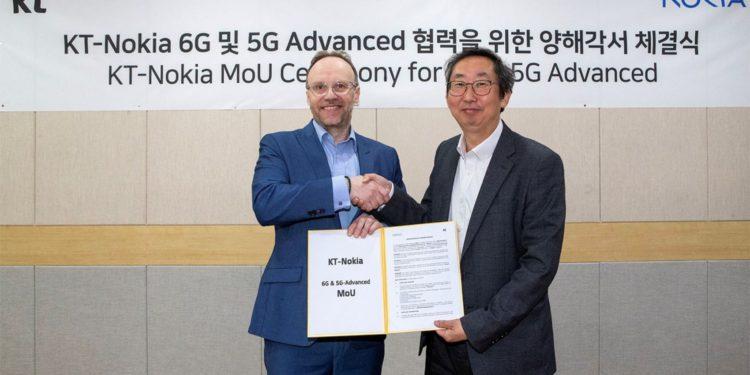South Korean telecommunications company KT has announced a partnership with Nokia for research into 6G technology. This is a concerted effort by key industry players to stay ahead in developing the next generation of cellular networks.
The collaboration shows the widespread acceptance of the term “6G” within the telecommunications community, despite some skepticism, and highlights the determination of companies like KT and Nokia to explore the potential of advanced wireless technologies.
In addition to developing advanced Open RAN technology for 6G, KT and Nokia will collaborate on exploring ultra-broadband wireless access using potential 6G frequencies. Their joint efforts will anticipate and identify future services relevant to the 6G era. This eventually prepares the groundwork for operators’ deployment of networks around 2030.
Lee Jong-sik, Managing Director of KT Network Research Institute, said that collaborating with Nokia will enable KT to advance mobile communication technology, particularly in evolving cloud and artificial intelligence applications.
Ari Kinaslati, Vice President of Nokia Wireless Strategic Technology, also emphasized the mutual objective of achieving technological superiority through collaborative research between KT and Nokia.
KT’s collaboration with Nokia builds upon its previous initiatives in advancing innovation for future mobile communication technologies. In October 2023, KT partnered with LG Electronics and Corning to develop and validate a reconfigurable intelligent surface (RIS) capable of operating across various 6G frequency bands.
As the groundwork for 6G standards progresses, global tech standards organizations such as the International Telecommunication Union (ITU) and the 3rd Generation Partnership Project (3GPP) actively define the framework and frequency allocation for the tech.
Referred to as “IMT-2030,” 6G is undergoing comprehensive development within these organizations. The ITU aims to finalize the technology standards by 2030. Additionally, 3GPP is preparing for the transition to 6G standardization this year and anticipates completing the specifications necessary for 6G commercial network deployment by 2029.
The technical reference for 6G, ‘IMT-2030’, was officially adopted by the ITU in November 2023, marking the initial phase in the development of the standard. Despite its formal designation as IMT-2030, the industry commonly refers to it as ‘6G’. Recently, 3GPP granted approval for the term ‘6G’, issuing an official logo to be used in specifications for the next generation of wireless connectivity.
While some industry players are enthusiastic about the prospects of the technology and have already begun research and innovation, others express skepticism about the need for another generational shift in mobile connectivity.
Orange’s Chief Technology and Innovation Officer, Bruno Zerbib, advocates for a focus on continuous innovation rather than waiting for formal standardization processes. However, as the countdown to 2030 progresses, momentum for 6G continues to build, with expectations high for addressing the shortcomings of 5G and ensuring the success of the next generation of wireless technology.
Also Read:
- Samsung Launches 114-Inch Micro LED TV
- Cryptocurrency Excluded from South Korea’s Amended Donation Laws
- Hyundai Invests Nearly $1 Billion in Motional for Autonomous Driving Future
- SK Hynix’s HBM Chipsets: Nearly Sold Out Amid Surging Demand for AI Applications
- South Korea Considers Joining AUKUS Partnership for Advanced Military Technology







